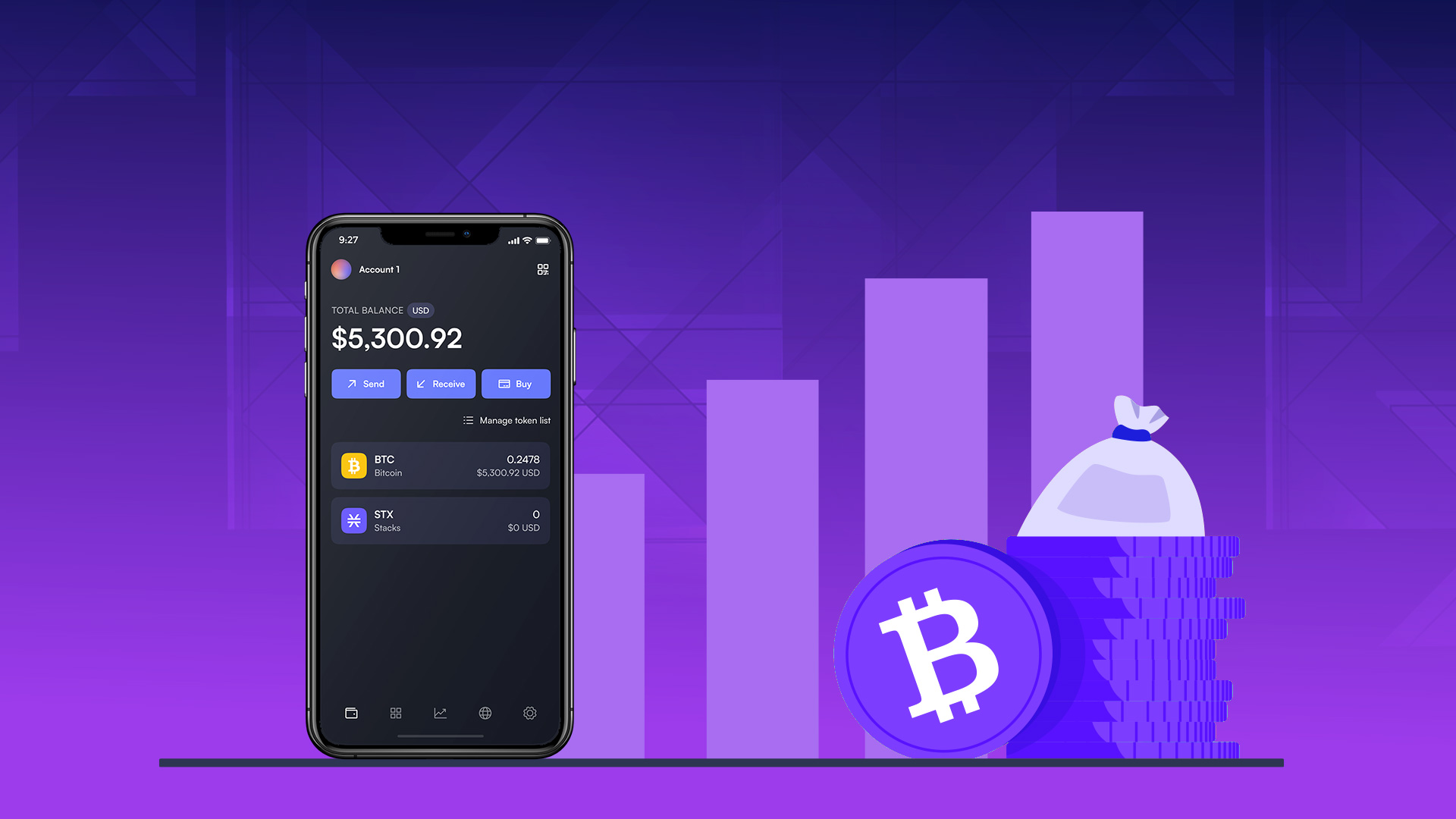Introduction
Welcome to the world of crypto lending, where traditional finance meets the innovative power of blockchain technology. In recent years, the crypto lending market has experienced significant growth, providing individuals and businesses with new opportunities to borrow and lend digital currencies.
Crypto lending is a decentralized financial system that allows users to borrow and lend cryptocurrencies and tokens in a peer-to-peer manner. The concept is simple: borrowers can obtain a loan using their digital assets as collateral, while lenders can earn interest on their funds by lending them to borrowers.
The rise of crypto lending can be attributed to several factors. First, it offers a convenient and efficient alternative to traditional banking systems, eliminating the need for intermediaries such as banks and credit institutions. Second, crypto lending provides access to liquidity for individuals and businesses who might not qualify for traditional loans due to strict requirements or lack of credit history. Lastly, the high volatility and potential for substantial returns in the crypto market make it an attractive option for investors looking to diversify their portfolios.
While the concept of lending cryptocurrencies may seem straightforward, there are several intricacies and considerations that both borrowers and lenders should be aware of. In this article, we will take a closer look at how crypto lending works, the steps involved in borrowing and lending crypto, the benefits and risks associated with it, and some popular platforms in the space.
Whether you are a crypto enthusiast interested in leveraging your digital assets or an investor looking for passive income opportunities, understanding the mechanics and nuances of crypto lending is essential. So, let’s dive in and explore the exciting world of crypto lending.
What is Crypto Lending?
Crypto lending refers to the practice of borrowing or lending digital currencies and tokens through decentralized platforms or specialized lending platforms. It operates on the principles of smart contracts, which are self-executing agreements with the terms of the loan encoded directly into the blockchain.
For borrowers, crypto lending offers a way to access liquidity without selling their digital assets. Instead, borrowers can use their cryptocurrencies as collateral to secure a loan. This means that they can retain ownership of their digital assets while still getting the funds they need. The collateral ensures that lenders have a form of security in case the borrower defaults on the loan.
Lenders, on the other hand, can lend their digital currencies to borrowers and earn interest on their funds. By participating in crypto lending, investors can potentially generate passive income by putting their idle crypto holdings to work.
One of the key advantages of crypto lending is its decentralized nature. Traditional lending platforms require intermediaries such as banks or credit institutions to facilitate the lending process. Crypto lending, however, utilizes blockchain technology to create a trustless environment, where transactions are transparent, secure, and verifiable.
Furthermore, crypto lending provides opportunities for individuals and businesses who may not have access to traditional banking services. This can include individuals with limited credit history, unbanked populations in developing countries, or businesses that may not meet the stringent requirements of traditional lenders.
Another benefit of crypto lending is the flexibility it offers in terms of loan terms and interest rates. Borrowers and lenders have the freedom to negotiate the terms of the loan, including the loan term, interest rate, and collateral requirements. This flexibility allows borrowers to find more favorable loan terms and lenders to earn competitive rates of return on their funds.
Overall, crypto lending plays a critical role in the evolution of the digital economy by providing liquidity, financial inclusion, and opportunities for investors. By understanding how crypto lending works and the benefits it offers, individuals and businesses can make informed decisions about participating in this emerging financial ecosystem.
Benefits of Crypto Lending
Crypto lending brings a range of benefits to both borrowers and lenders, making it an attractive option for individuals and businesses in the digital economy. Here are some key advantages of participating in crypto lending:
- Access to Liquidity: For borrowers, crypto lending offers a convenient way to access liquidity without having to sell their digital assets. Instead of parting with their cryptocurrencies, borrowers can use them as collateral, unlocking the value of their holdings while still retaining ownership.
- Flexible Loan Terms: Crypto lending provides borrowers with flexible loan terms. Unlike traditional lending systems, borrowers can negotiate loan terms directly with lenders, including interest rates, loan durations, and collateral requirements. This flexibility allows borrowers to find loan options that best meet their specific needs.
- Diversification of Investment Portfolio: For lenders, crypto lending provides an opportunity to diversify their investment portfolio. By lending out their digital currencies, investors can earn interest on their idle assets and generate passive income. This allows them to capitalize on the potential returns of crypto lending while minimizing risk.
- Enhanced Financial Inclusion: Crypto lending opens up financial services to individuals and businesses who may not have access to traditional banking systems. This includes populations in developing countries or individuals and businesses with limited credit history. By leveraging their digital assets as collateral, borrowers can access funds that would otherwise be unavailable to them.
- Transparency and Security: Crypto lending operates on blockchain technology, which provides transparency and security to both borrowers and lenders. The use of smart contracts ensures that loan terms are executed automatically and recorded immutably on the blockchain. This eliminates the need for intermediaries, reduces the risk of fraud, and ensures the integrity of the lending process.
- Potential for Higher Returns: Lenders in the crypto lending market have the potential to earn higher returns compared to traditional banking systems. With interest rates often more favorable in the crypto lending space, lenders can maximize their earning potential by lending out their digital currencies.
These benefits make crypto lending an attractive option for individuals and businesses looking for alternative financial solutions. By leveraging the advantages of blockchain technology, crypto lending offers greater accessibility, flexibility, transparency, and earning potential in the digital economy.
How does Crypto Lending work?
Crypto lending operates on decentralized platforms or specialized lending platforms that facilitate borrowing and lending of digital currencies. The process involves several key steps that both borrowers and lenders need to follow. Here’s a breakdown of how crypto lending works:
- Choose a Crypto Lending Platform: The first step is to select a reputable crypto lending platform that suits your needs. Look for platforms that offer a wide range of digital currencies for lending and borrowing, have a good reputation, and provide adequate security measures to protect your assets.
- Create an Account: Once you have chosen a platform, you will need to create an account. This typically involves providing your personal information and completing the necessary verification process required by the platform to ensure compliance with regulatory requirements.
- Select your Role: Depending on whether you want to borrow or lend, you will need to choose your role on the platform. Borrowers will provide collateral in the form of digital assets and seek loans, while lenders will deposit their digital currencies to lend them out and earn interest.
- Collateralization: Borrowers will need to provide collateral in the form of digital assets to secure their loans. The platform will typically require borrowers to deposit a certain percentage of the loan amount as collateral. This ensures that lenders have a form of security in case of default.
- Loan Terms and Interest Rates: Borrowers and lenders can negotiate loan terms and interest rates directly on the platform. Borrowers will specify the desired loan amount, interest rate, and loan duration. Lenders can evaluate loan requests and choose the ones that suit their investment criteria.
- Smart Contract Execution: Once the loan terms are agreed upon, the platform will generate a smart contract that outlines the terms of the loan. This smart contract is then executed on the blockchain, automatically transferring the funds to the borrower and securing the collateral.
- Loan Repayment: Borrowers are responsible for repaying the loan amount along with the accrued interest within the agreed-upon timeframe. Failure to repay the loan may result in the liquidation of the collateral by the platform. Lenders receive their principal amount along with the interest earned upon successful loan repayment.
- Withdrawal of Funds: Lenders can choose to withdraw their funds or reinvest them once the loan is repaid. Borrowers can also withdraw their collateral once they have paid off their loan in full.
It’s important to note that each crypto lending platform may have its own specific process and rules. Therefore, it’s crucial to thoroughly read the terms and conditions of the platform you choose and understand the risks and obligations associated with crypto lending.
By following these steps, borrowers can access the funds they need while retaining ownership of their digital assets, and lenders can earn interest on their idle crypto holdings. Crypto lending provides a decentralized and efficient way to borrow and lend digital currencies, creating new opportunities in the evolving landscape of the digital economy.
Steps to Borrowing Crypto
If you are looking to borrow crypto, whether it’s for personal or business purposes, here are the key steps to follow:
- Select a Crypto Lending Platform: Start by choosing a reliable and reputable crypto lending platform that offers borrowing services. Research different platforms, compare their terms and interest rates, and ensure that they support the digital currency you want to borrow.
- Create an Account: Once you have selected a platform, sign up and create an account. Provide the necessary information and complete any verification procedures that may be required by the platform to ensure compliance with regulations and security measures.
- Deposit Collateral: To secure your loan, you will need to deposit collateral in the form of digital assets. The platform will specify the collateral requirements, usually a percentage of the loan amount. Make sure you have enough assets to meet the collateral requirements.
- Submit Loan Request: Next, you will need to submit a loan request detailing the desired loan amount, loan duration, and interest rate. Some platforms may also ask for additional information, such as the purpose of the loan or your credit history.
- Wait for Approval: After submitting your loan request, it will go through a review process by the lending platform. The platform will assess your collateral, creditworthiness, and loan terms to determine whether to approve your loan request. This approval process may take some time, depending on the platform and its policies.
- Receive Loan and Repay: If your loan request is approved, the platform will transfer the approved loan amount to your account. You can then use the borrowed funds for your intended purpose. Make sure to adhere to the agreed repayment schedule, including the repayment amount and duration.
- Repay Loan and Retrieve Collateral: Once the loan term is complete, you will need to repay the loan amount along with the accrued interest. Ensure that you have sufficient funds in your account to meet the repayment obligations. Upon successful repayment, you will receive your collateral back from the lending platform.
Remember, it’s essential to carefully review the terms and conditions of the lending platform, including interest rates, repayment terms, and any fees involved. Understand your loan obligations, and make sure you have a repayment plan in place to avoid defaulting on your loan. By following these steps, you can successfully borrow crypto and meet your financial needs while utilizing the advantages of the crypto lending ecosystem.
Steps to Lending Crypto
If you have crypto holdings and are interested in earning passive income by lending them out, here are the steps to follow:
- Select a Crypto Lending Platform: Begin by choosing a reputable crypto lending platform that offers lending services. Look for platforms that have a good track record, transparent terms, and support the digital currencies you have available for lending.
- Create an Account: Sign up for an account on the chosen lending platform. Provide the necessary information and complete any required verification processes to ensure compliance with regulations and security measures.
- Deposit Crypto: Once your account is set up, deposit the digital currencies you wish to lend. These will be held as collateral and used to secure the loans provided by borrowers on the platform.
- Set Lending Terms: Specify your lending preferences, including the interest rates you are willing to offer and the loan duration you are comfortable with. Some platforms may also allow you to set additional criteria, such as the type of collateral you accept or the creditworthiness of borrowers.
- Review and Select Loan Requests: As a lender, you will have access to loan requests made by borrowers on the platform. Evaluate the loan details, such as loan amount, interest rate, and borrower’s creditworthiness. Choose the loan requests that align with your lending criteria and risk appetite.
- Lend and Earn Interest: Once you have selected loan requests, the lending platform will facilitate the transfer of the loaned funds from your account to the borrower. As the borrower repays the loan, you will earn interest based on the agreed-upon interest rate and loan duration.
- Monitor and Manage Loans: Keep track of your active loans and monitor the repayment progress. Some lending platforms provide tools and notifications to help you manage your lending activities effectively. Be prepared to make decisions regarding loan extensions or enforcement actions in case of default.
- Withdraw or Reinvest: Once the loan term is complete and the borrower has repaid the loan with interest, you can choose to withdraw the funds to another wallet or reinvest them in new lending opportunities. Review your lending strategy periodically to optimize your returns and manage your crypto holdings.
It’s important to note that lending platforms have varying terms and conditions, so be sure to familiarize yourself with the specific rules and policies of the platform you choose. Understand the risks involved in lending, such as the potential for borrower default or market volatility. By following these steps and exercising due diligence, you can participate in crypto lending and earn passive income from your crypto assets.
Risks and Considerations in Crypto Lending
While crypto lending presents several opportunities and benefits, it’s important to be aware of the risks and considerations involved. Here are some key factors to keep in mind before engaging in crypto lending:
- Volatility: The cryptocurrency market is highly volatile, with prices fluctuating rapidly. This volatility can impact the value of your collateral or the repayment capacity of borrowers. Be prepared for potential price swings and assess the risk tolerance associated with lending in such a market.
- Counterparty Risk: There is always a risk that borrowers may default on their loans, either due to insolvency, fraudulent activities, or other unforeseen circumstances. Conduct thorough research on borrowers and platforms to minimize counterparty risk. Consider diversifying your lending portfolio to spread the risk among multiple borrowers.
- Regulatory Uncertainty: The regulatory landscape for cryptocurrencies is continuously evolving, and regulatory actions or changes in regulations can impact the operations of crypto lending platforms. Stay informed about the legal and regulatory environment in your jurisdiction to ensure compliance and protect your interests.
- Smart Contract Vulnerabilities: Smart contracts, although designed to be secure, may still have vulnerabilities that could be exploited by nefarious actors. Be vigilant and choose lending platforms that have undergone rigorous security audits and have strong security protocols in place.
- Liquidity Concerns: The liquidity of cryptocurrencies can vary, and it may be challenging to sell or convert your collateral quickly in the event of market downturns or borrower defaults. Evaluate the liquidity of the digital assets you plan to use as collateral and consider the potential impact on your lending activities.
- Platform Risk: The reliability and security of the lending platform you choose are crucial. Research and choose platforms with a proven track record, strong security measures, and transparent operations. Look for platforms with robust risk management practices and insurance coverage to mitigate potential platform risks.
- Market Risk: The performance and stability of the broader crypto market can impact the value of the digital assets you lend or borrow. Stay informed about market trends and consider diversifying your lending activities across different cryptocurrencies to minimize exposure to a single asset.
It is crucial to conduct thorough research, assess your risk tolerance, and carefully consider these factors before participating in crypto lending. Keep abreast of industry developments, seek professional advice if needed, and continuously monitor and manage your lending activities to mitigate risks effectively.
Popular Crypto Lending Platforms
The popularity of crypto lending has led to the emergence of various lending platforms that cater to the needs of borrowers and lenders in the digital economy. Here are some popular crypto lending platforms:
- Celsius Network: Celsius Network is a well-known crypto lending platform that offers competitive interest rates on lending and borrowing. Users can earn interest on their deposited cryptocurrencies and borrow against their holdings. The platform also provides a mobile app for easy access and management of funds.
- Nexo: Nexo is a blockchain-based lending platform that allows users to borrow against their crypto assets instantly. It supports a wide range of cryptocurrencies and offers flexible loan terms. Nexo boasts a seamless user experience and high-level security measures for borrowers and lenders alike.
- BlockFi: BlockFi is a popular crypto lending platform that offers competitive interest rates for both borrowers and lenders. Borrowers can leverage their crypto holdings to obtain cash loans, while lenders can earn interest on their deposited cryptocurrencies. BlockFi also provides a user-friendly interface and additional features such as a Bitcoin rewards credit card.
- Aave: Aave is a decentralized lending platform built on the Ethereum blockchain. It enables users to lend and borrow a wide range of cryptocurrencies. Aave utilizes a unique pooling mechanism to optimize interest rates and offers innovative features like flash loans, which allow users to borrow without collateral briefly.
- Bitfinex: Bitfinex is a reputable cryptocurrency exchange that also provides lending services. Users can lend their digital assets to margin traders and earn interest on their loans. The platform offers a wide variety of lending markets and competitive rates, making it a popular choice for lenders seeking passive income.
- Crypto.com: Crypto.com is a comprehensive cryptocurrency platform that offers lending and borrowing services. Users can earn interest on their crypto holdings through Earn, the platform’s lending program. Crypto.com also provides a range of other features, including a crypto debit card and a diverse selection of cryptocurrencies for trading.
These are just a few examples of popular crypto lending platforms available in the market. It’s crucial to conduct thorough research, compare their offerings, fees, interest rates, and security measures before choosing a platform that aligns with your lending or borrowing needs.
Remember to assess the platform’s reputation, security practices, and customer support. Additionally, be aware of any specific requirements or restrictions imposed by the platforms, such as minimum deposit amounts or geographic limitations.
By selecting a reliable and reputable crypto lending platform, you can confidently participate in the growing world of crypto lending and enjoy the benefits it offers in terms of earning opportunities and financial flexibility.
Conclusion
Crypto lending has revolutionized the financial landscape, providing individuals and businesses with innovative opportunities to borrow and lend digital currencies. By leveraging blockchain technology, crypto lending offers benefits such as liquidity, financial inclusion, and the potential for passive income.
Through decentralized platforms or specialized lending platforms, borrowers can access funds without selling their digital assets, using them as collateral instead. Lenders have the opportunity to earn interest on their idle crypto holdings by lending them out.
However, it is essential to consider the risks and challenges involved in crypto lending. Factors such as market volatility, counterparty risk, regulatory uncertainties, and platform vulnerabilities should be carefully evaluated before participating in crypto lending.
Popular crypto lending platforms, such as Celsius Network, Nexo, BlockFi, Aave, Bitfinex, and Crypto.com, provide users with access to a wide range of lending and borrowing services, each with its own unique features and benefits.
Before engaging in crypto lending, it is vital to conduct thorough research, understand the terms and conditions of the lending platforms, and assess your risk tolerance. By doing so, you can make informed decisions and maximize the opportunities available while minimizing potential risks.
Crypto lending continues to evolve, driven by the growing demand for decentralized financial solutions. As the industry progresses, it is essential to stay updated on the latest developments, regulatory changes, and best practices to ensure a secure and rewarding crypto lending experience.
Whether you are a borrower seeking liquidity or a lender looking to earn passive income, crypto lending offers an exciting and dynamic space within the digital economy. With careful consideration and informed decision-making, you can participate in this emerging financial ecosystem and harness the potential of crypto lending.

























